► BYD’s first non-electric car for Europe
► PHEV with massive possible e-range
► Priced from £33,205 in the UK
A car with an engine from BYD? How strange.
Even so, BYD knows not everyone’s able to switch to electric, so is targeting that family car buyer who’s not entirely ready to give up the fuel pump just yet. The new Seal DM-i is designed to do just that – offer as much of BYD’s electric nous in a car that it can, while also giving you the added flexibility of longer journeys without the need to rely on chargers.
Has BYD pulled it off, like it has with its EVs? Hmm…
At a glance
Pros: Smooth and very quiet powertrain, good brake feel, well-equipped
Cons: Sloppy ride, vague steering, very bland to spend time in, boot isn’t that big
What’s new?

The Seal U is a crossover designed to target the heartland of Europe’s ‘C-segment’ – the family SUV market that clocks hundreds of thousands of sales every year, to the point that it’s one of Europe’s biggest car segments.
The Seal U DM-i isa new model for BYD in Europe and its first non-pure-electric model introduced into the market. It’s just one of a few additional models to come out of BYD after the Atto 3, Seal and Dolphin went on sale in the UK. Other European markets also benefit from the Han – a large executive four-door EV – and intel suggests the dinky and cheap Seagull city car seen in China could come to Europe, too.
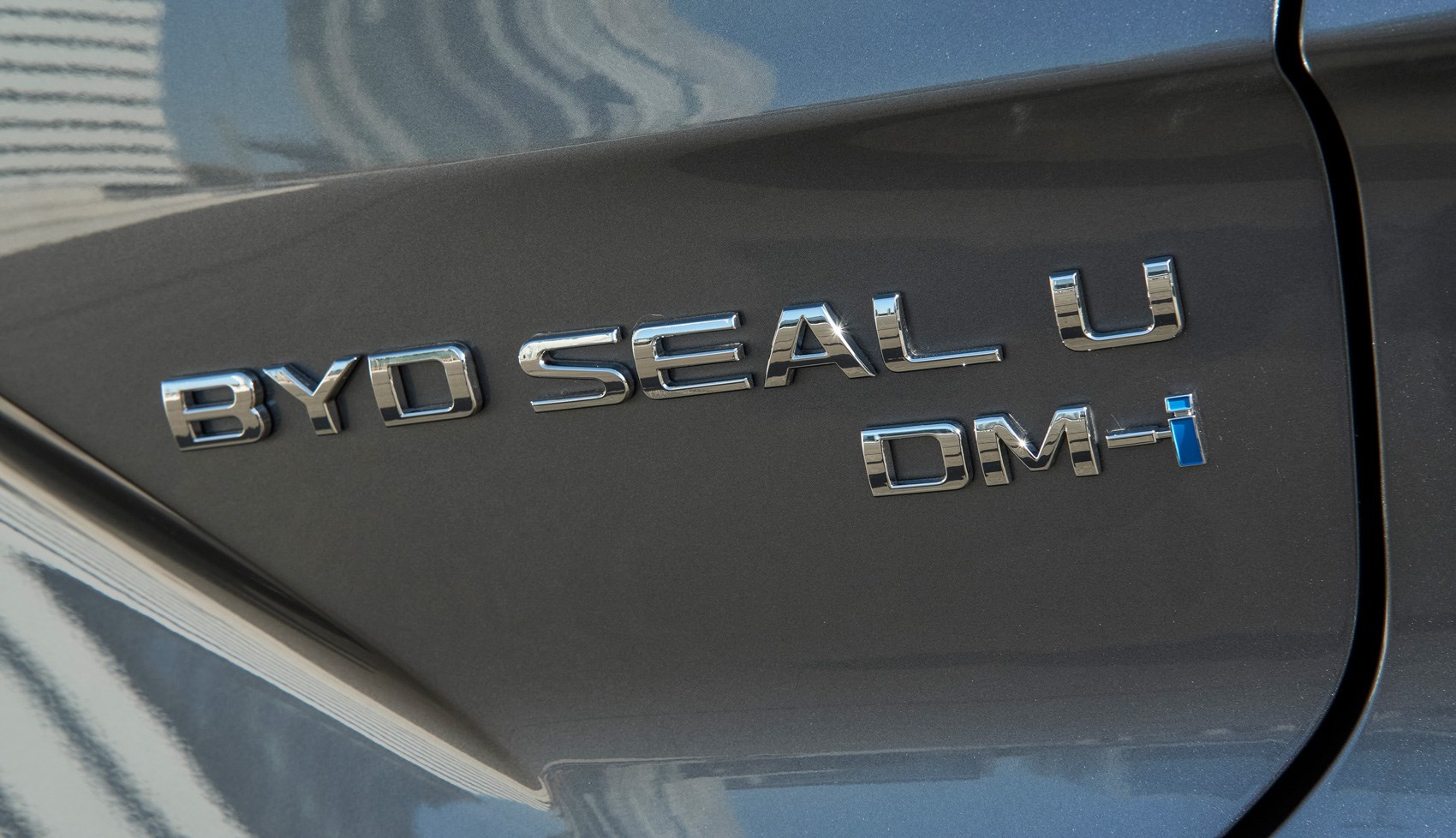
The ‘DM-i’ part of this car’s name points to the fact that it’s a plug-in hybrid model in BYD speak: ‘DM’ stands for Dual Mode, alluding to the fact that there’s an engine at work here as well as electric motors. The DM-i model also sits alongside a battery-electric Seal U – a model we don’t (yet) get in the UK.
What are the specs?
BYD offers two versions from launch: the entry-level (and confusingly-named) Boost and upper Design.
Both the launch specs feature an 18.3kWh battery pack and can be either AC charged at up to 11kW or DC charged up to 18kW. Boost spec includes a 1.5-litre Atkinson-cycle, naturally-aspirated four-cylinder petrol and a single e-motor, developing 215bhp and capable of sprinting to 62mph in 8.9sec. BYD claims Boost models are capable of between 44.1-313.8mpg depending on use, and good for around 50 miles of zero-emission driving.
Go for the Design model and your 1.5-litre engine is turbocharged and another e-motor is thrown onto the rear axle for all-wheel drive. Power jumps to 319bhp and the 0-62mph sprint drops to 5.9sec. BYD says fuel economy can be around 38.1-235.4mpg depending on use, and roughly 43 miles of e-range is possible. As well as the usual Eco, Normal and Sport modes, Design models also feature Mud and Sand drive modes to make better use of the all-wheel drive system.
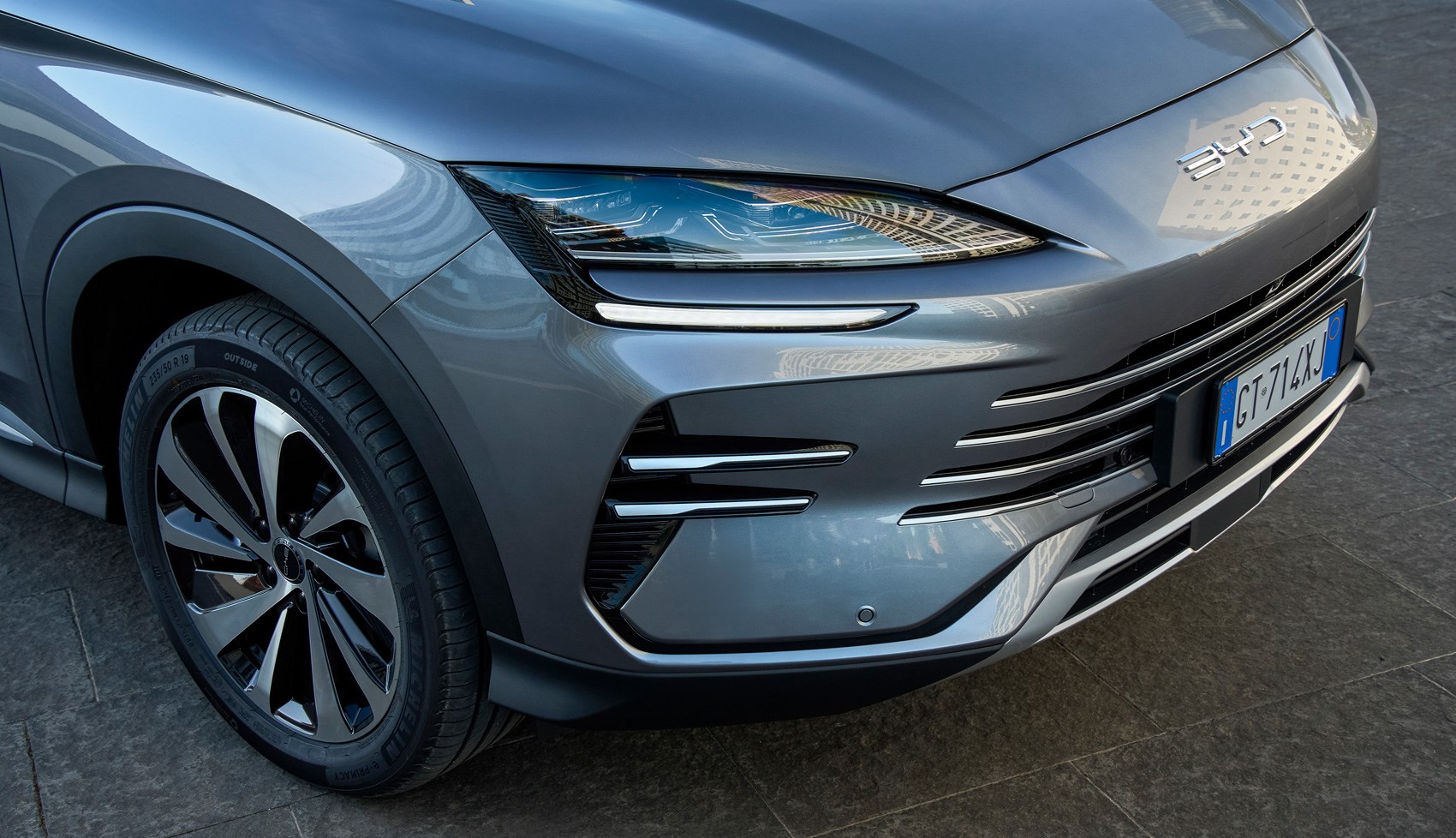
BYD also says a ‘Comfort’ spec is also on the way from autumn 2024 onwards, which uses the same powertrain as the Boost model, but with a larger 26.6kWh pack for more e-range.
Basically, Boost is your entry-level standard range model, Comfort will be the long-range version and Design is the more potent all-wheel drive one.
And, regardless of the model you pick, it has no bearing on the amount of kit you get. Every Seal U model is positively beriddled with equipment, with tech like heated and cooled seats, a massive (rotatable) infotainment screen, head-up display, a premium audio system from Harman’s Infinity range, vehicle-to-load functionality and two wireless charging pads all thrown in as standard.
What about the interior?
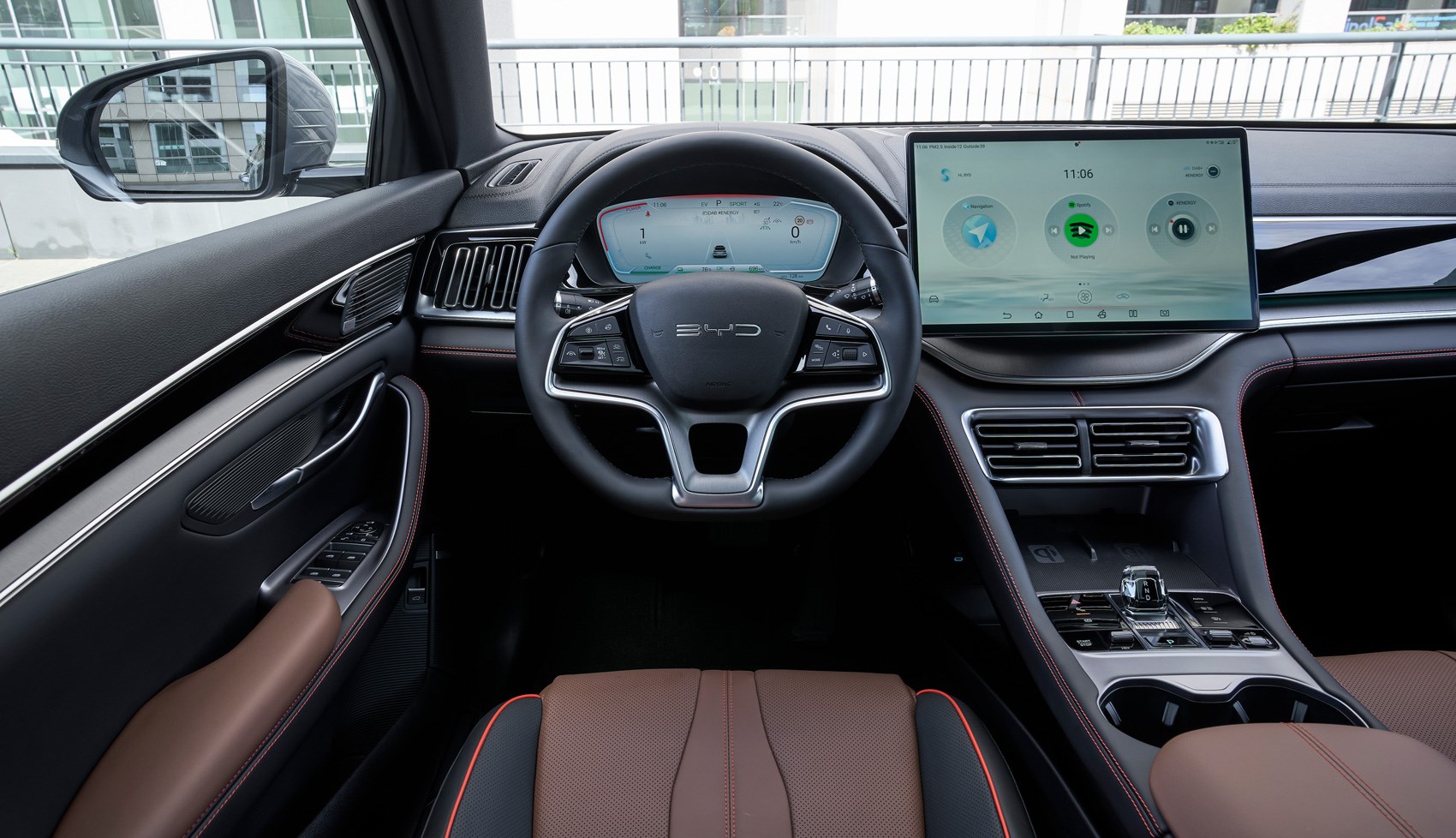
Oddly, this is perhaps the plainest and most sensible interior we’ve seen in a BYD model – which is both a positive and negative point. The Seal, Dolphin and Atto 3 have all been known for their nice-feeling-if-quite-wacky interior designs, but the Seal U has plucked for a much more conventional layout – making things a little easier to navigate. Material quality is perfectly reasonable, with solid enough materials and no overtly cheap-feeling touch points.
The interior is still dominated by that enormous central infotainment screen (as it is in the other BYD cars on sale in the UK) and there are some welcome physical switches in the centre console, flanking the slightly bejeweled drive shifter also seen in the Seal. The driver’s instruments are a little busy with information, but they’re customisable and brightly backlit and the infotainment system is smooth and quick to respond to inputs.
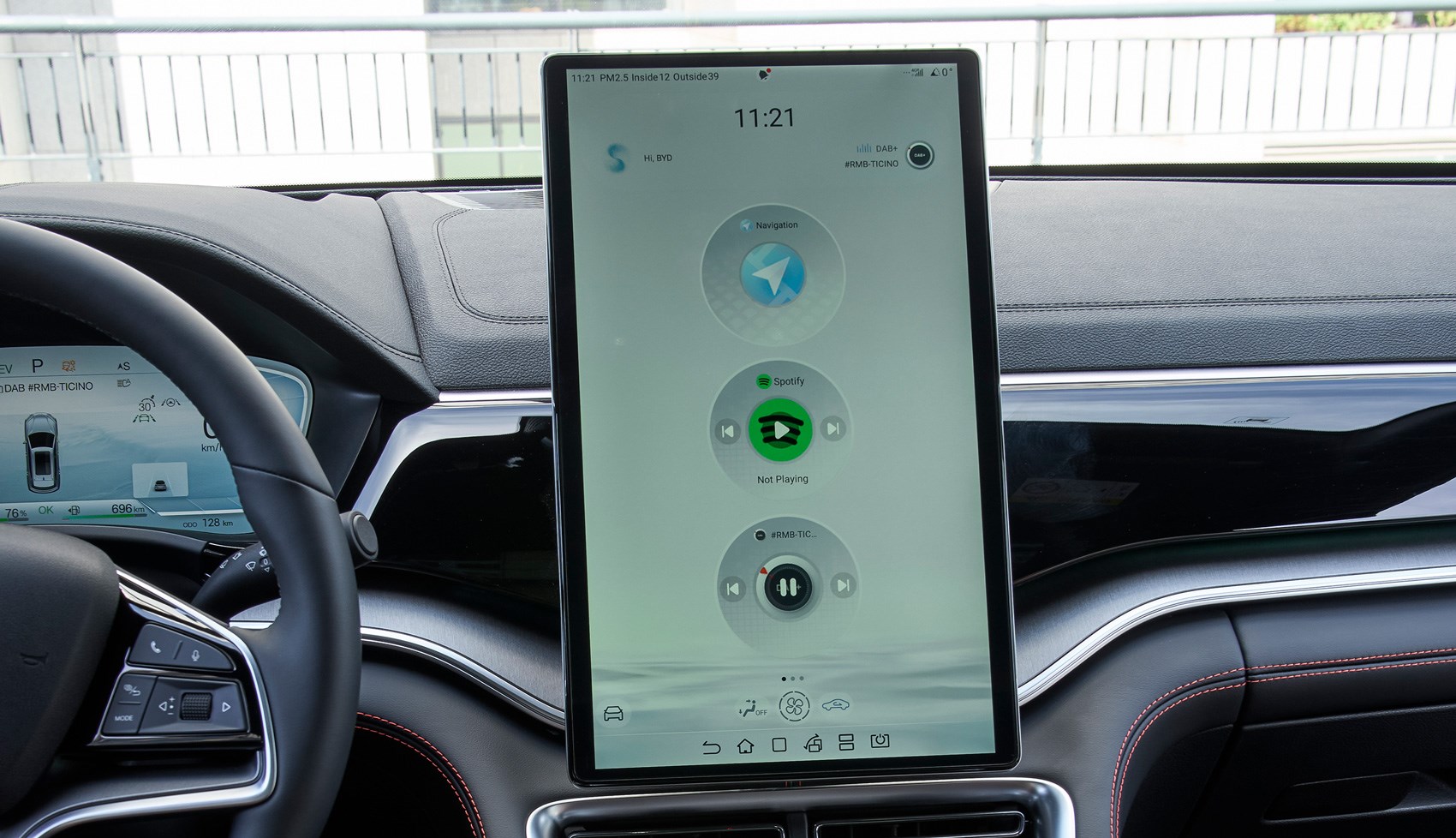
Handily, there are some ‘buttons’ on the screen’s swipe-down quick-access menu to turn off some of the more annoying or intrusive safety aids. The fact you can rotate that central screen feels like a bit of a gimmick, though – we suspect you’d choose your preferred aspect ratio and just leave it there.
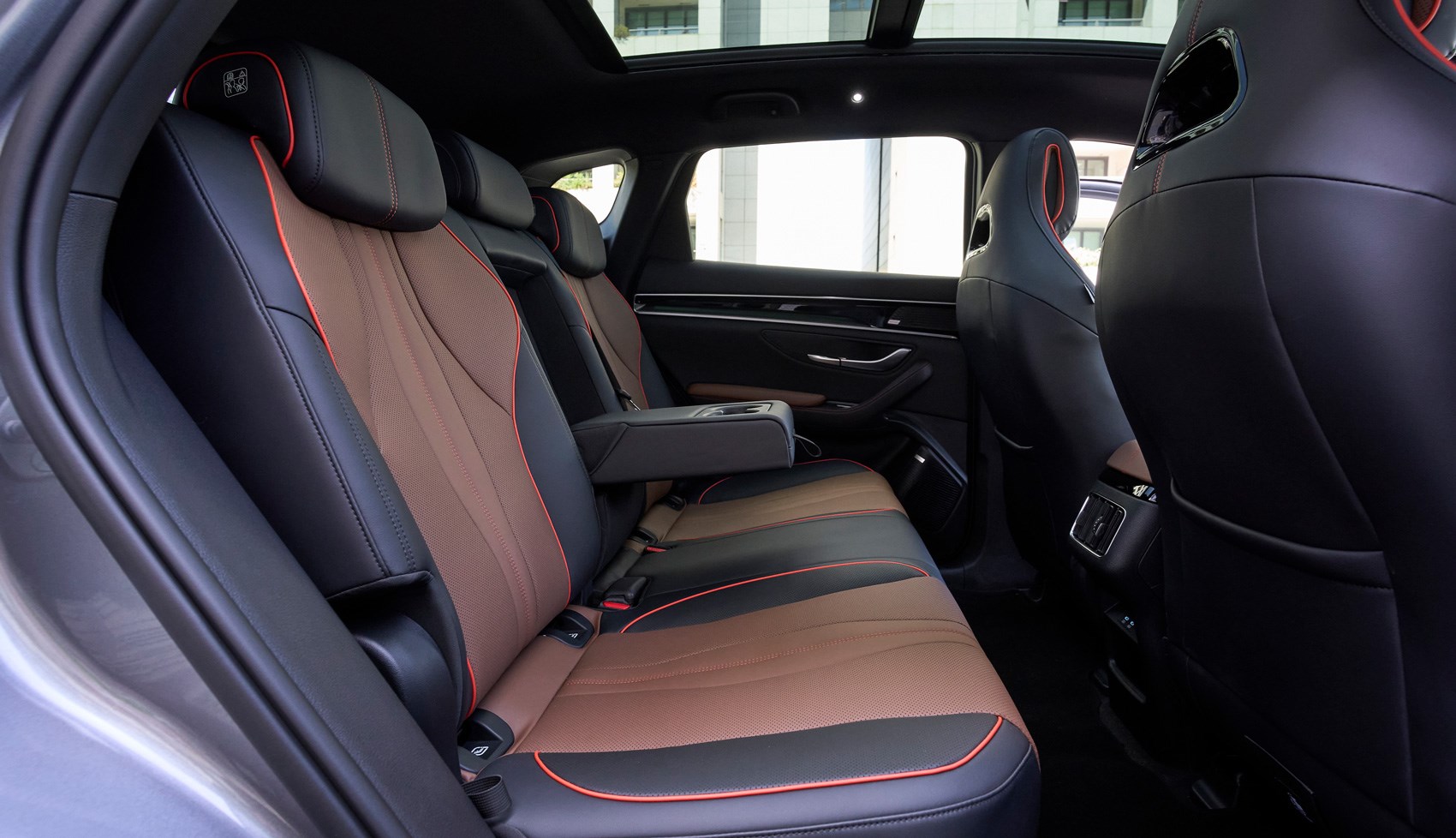
There’s a reasonable amount of adjustment available to the driver (though I’d personally like to sit a smidge lower down than I could) and overall visibility is… fine; the Seal U feels rather wide from the driver’s seat, and the rear window is very small. Rear space is good for adults sat behind tall adults, while the 425-litre boot space isn’t anything special for this size of car.
What’s it like to drive?

What’s very interesting after the first few miles is that the Seal U doesn’t feel you’re your average plug-in hybrid. The car’s deeply complicated powertrain – which includes clutches, reduction gears for the engine and electric motor(s) and software that always ensures there’s a minimum battery charge of 25 per cent – all make the car feel like you’re always driving on electric power, much like Nissan’s Qashqai e-Power, Renault’s E-Tech models or Mazda’s MX-30 REV range-extender.
We’ve only tested the upper Design version thus far and performance is more than good enough, with a smooth and very linear power delivery as you’d expect, and a reasonable step-up in throttle response as you switch between Eco, Normal and Sport. When the engine does wake up, it’s remarkably quiet even under hard throttle loads – something cars like that MX-30 REV or literally any Toyota/Lexus hybrid could only dream of. Wind noise is minor, too, with only a little bluster coming from the door mirrors.
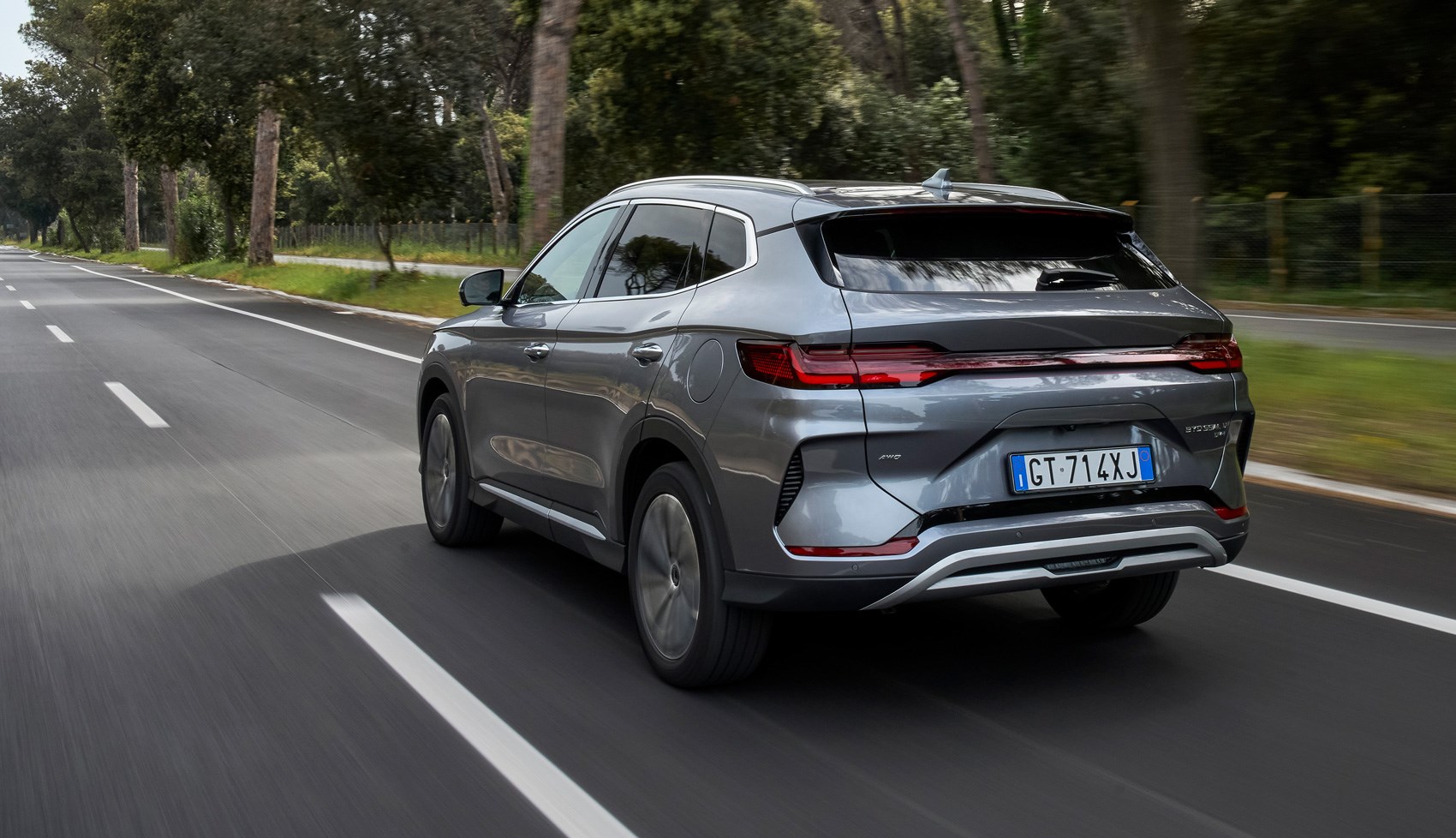
What’s very welcome is a feelsome and accurate brake pedal – something that’s so rare on a plug-in hybrid model due to balancing the combination between regenerative and physical braking. The pedal bites early and feels progressive rather than soggy or unpredictable in feel like so many other PHEVs on the market.
But, to drive, the Seal U is rather stodgy at best. The steering is very light and very vague, with twisty and mountainous roads in Italy where we tested the car forcing us to regularly reassess how much steering lock we were applying mid-turn. A general feeling of looseness to the steering isn’t all that confidence inspiring.
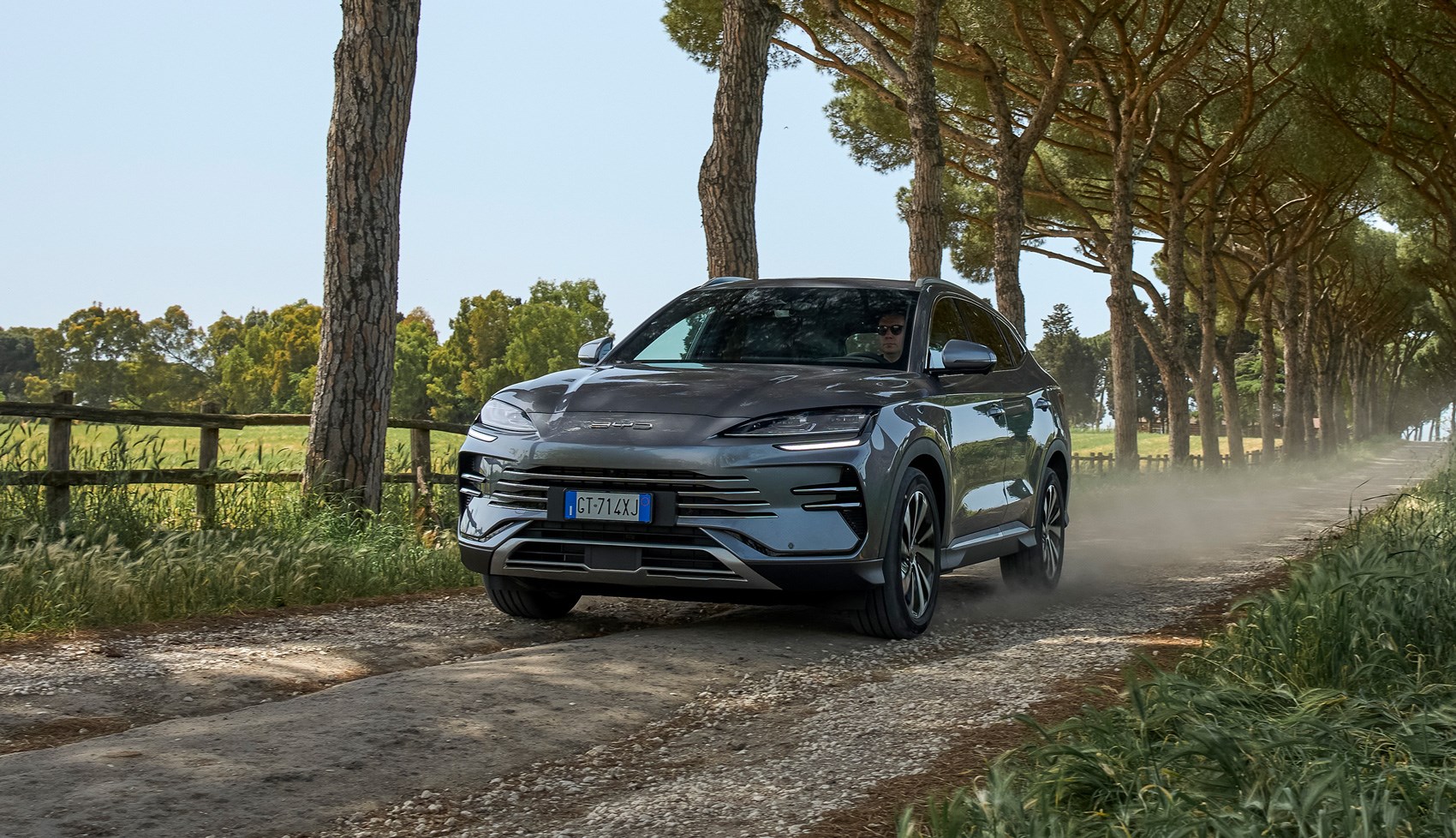
The ride also needs some work. The Seal U is incredibly softly sprung, which pays some dividends at higher speeds with a plush and wafty ride. But the big snag is that it introduces a lot of pitching and wallowing over large undulations in the road. Smaller ruts in the road cause the car to jiggle, with the suspension’s slow rebounding causing a bit of head toss at slower speeds. It’s not a car that feels particularly tied down, even if it does feel a little calmer at a motorway cruise.
Before you buy
Set on a Seal U? Keep the price down and just go for a Boost model – priced from £33,205 – as the performance is reasonable; the more powerful Design model – priced from £39,905 – feels like overkill and there’s no difference in equipment. The Comfort trim sounds attractive, though, adding extra zero-emission range what will likely be not a load of extra cash when it goes on sale in the autumn of 2024.
It’s an interesting car to place compared to rivals. Because of the way the car drives, some of the most natural rivals feel like the Nissan Qashqai E-Power, Renault Austral E-Tech Hybrid or maybe even the Honda HR-V. All of these are similarly priced to the entry-level Seal U DM-i (circling the £34k mark), however, and we’d much more likely pick the Qashqai than the BYD because of its neater handling
But, given it’s a plug-in hybrid, you also have to consider rivals from other brands. A Ford Kuga PHEV or a Kia Sportage PHEV are around £41k, and a base spec Volkswagen Tiguan eHybrid is £42k. All three handle much more sweetly than the Seal U and all have larger boot areas.
Verdict: BYD Seal U DM-i

BYD’s first non-pure-electric offering in Europe is an interesting one. There’s loads to like on paper with masses of standard equipment and a remarkably smooth powertrain that feels almost like an EV, but with an added usability edge for those who haven’t yet entirely been convinced to drop the petrol pump. Rear space is good and the interior quality feels competitive against pretty much all its rivals.
But the Seal U isn’t remotely exciting to drive – to the point that it’s dynamically soggy in places. And one of BYD’s biggest USPs – an exterior and interior design ethos that throws in tonnes of surprise and delight has been ruthlessly culled here in favour of crushing conventionalism.
There are some benefits to the DM-i but, despite all the complicated (over)engineering, it simply doesn’t feel as competitive as the Seal or Dolphin EVs.
Specs are for a BYD Seal U DM-i Design